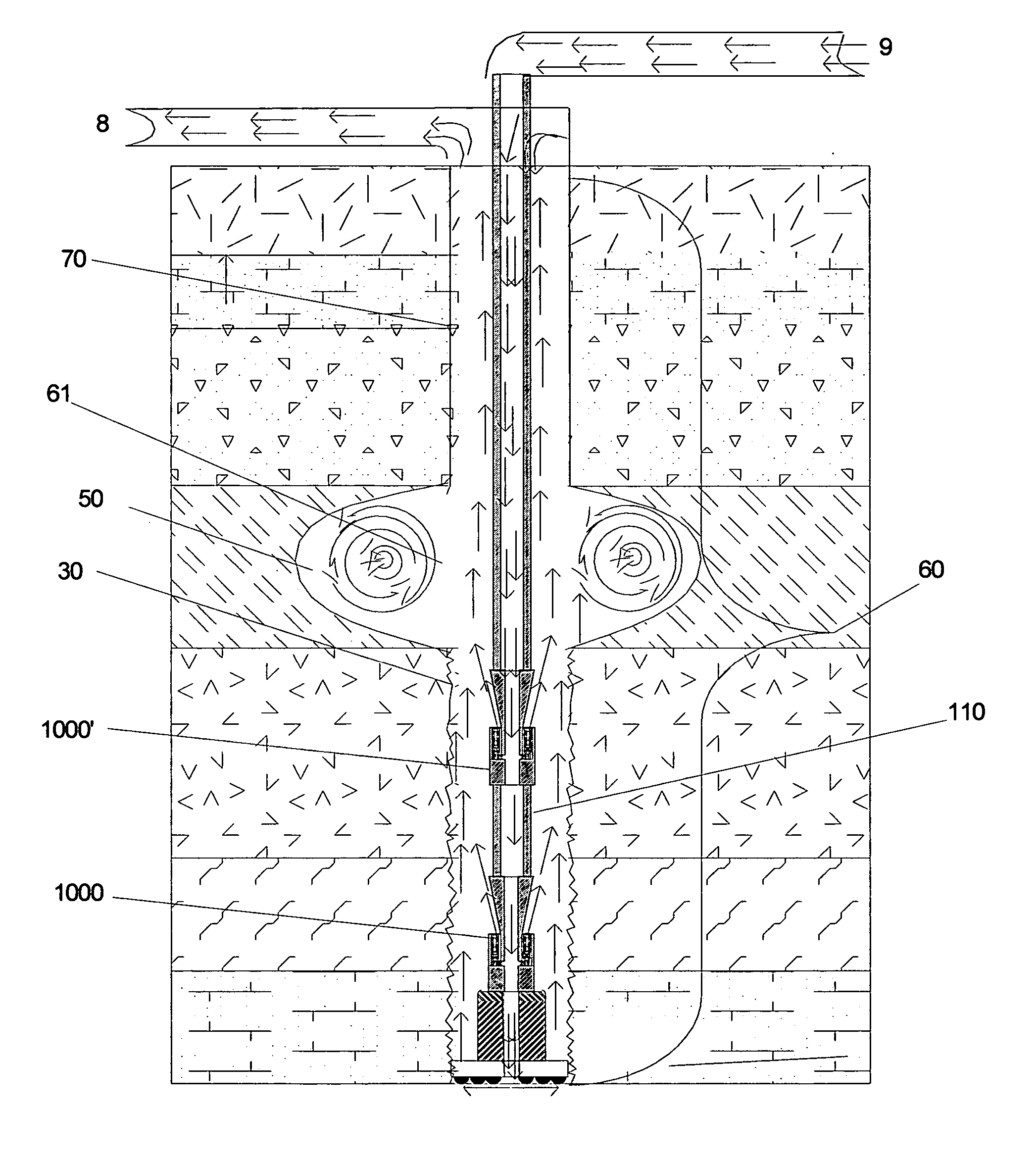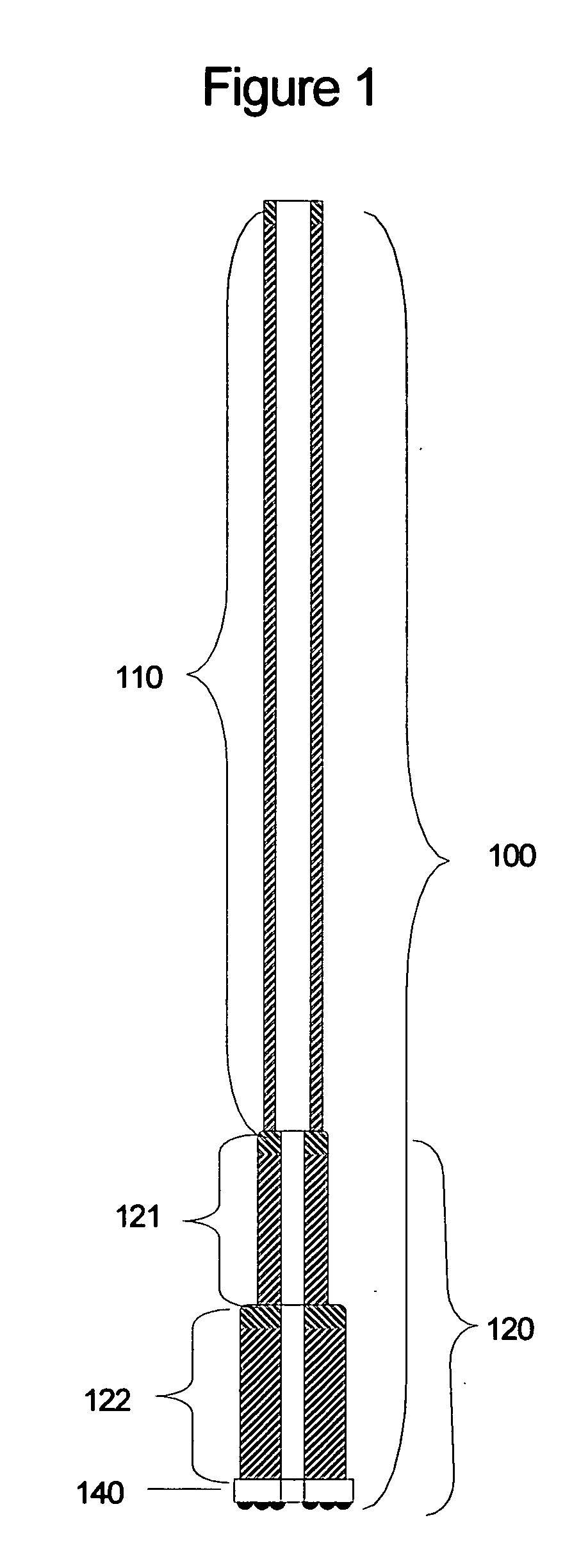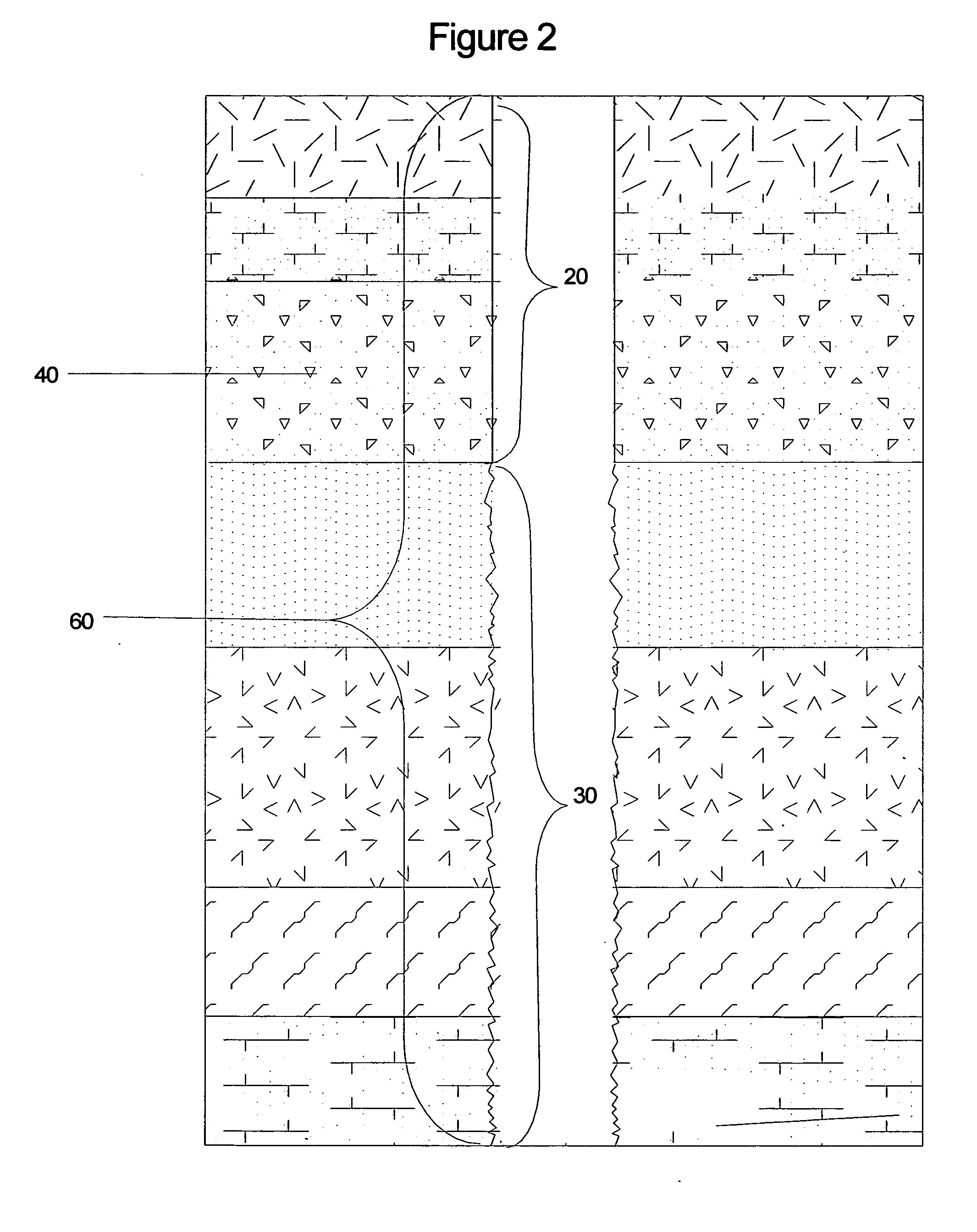Down hole air diverter
a diverter and air technology, applied in the direction of borehole/well accessories, drilling pipes, drilling rods, etc., can solve the problems of inability to fully adapt, inability to fully appreciate, and inability to drill mud, so as to reduce the type of situation, reduce the environmental impact, and save costs.
- Summary
- Abstract
- Description
- Claims
- Application Information
AI Technical Summary
Benefits of technology
Problems solved by technology
Method used
Image
Examples
Embodiment Construction
[0222] Down Hole Air Diverter
[0223] A typical drilling configuration is shown in FIG. 1. Drillstring combination 100 comprises a plurality of drillpipe 110 attached end to end, having a passageway along its axis, and connected to a bottom hole assembly 120. In practice, any of a wide variety of components may comprise drillstring combination 100. Bottom hole assembly 120 comprises a plurality of drill collars 121, which typically have an outside diameter greater than drillpipe 110, and optionally a plurality of drill collars 122 of larger outside diameter, and drill bit 140. The passageway of drillpipe 100 typically has a diameter greater than the passageway of drill collars 121 and drill collars 122. The flow area created by the diameters of the passageway of drill collar 121 is typically at least three times smaller than the flow area created by the diameter of the passageway of drillpipe 110. Therefore there is typically a significant amount of available pneumatic fluid energy a...
PUM
 Login to View More
Login to View More Abstract
Description
Claims
Application Information
 Login to View More
Login to View More - R&D
- Intellectual Property
- Life Sciences
- Materials
- Tech Scout
- Unparalleled Data Quality
- Higher Quality Content
- 60% Fewer Hallucinations
Browse by: Latest US Patents, China's latest patents, Technical Efficacy Thesaurus, Application Domain, Technology Topic, Popular Technical Reports.
© 2025 PatSnap. All rights reserved.Legal|Privacy policy|Modern Slavery Act Transparency Statement|Sitemap|About US| Contact US: help@patsnap.com



